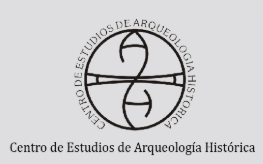THE MERCED OF NIQUIXAO IN THE CONTEXT OF OCCUPATION AND TERRITORIAL SECURING OF THE CENTRAL REGION OF THE PROVINCE OF CATAMARCA IN THE MID-17TH CENTURY. AN APPROACH FROM ARCHAEOLOGY
DOI:
https://doi.org/10.35305/tpahl.v14i1.144Keywords:
Historical archeology, colonial period, land grants, material record, ethnic groupsAbstract
Investigations on Colonial development in the Argentinian NW have shown its territorial consolidation process complexity, reflected in data extracted from a vast documentary record, where those of an administrative nature stand out. These show the intention to consolidate the region based on land mercy and encomiendas de natural since the foundations of the cities of Santiago del Estero (1553), San Miguel de Tucumán (1561), FirtsLondres de Catamarca (1558) and Todos Los Santos de la Nueva Rioja (1591). This colonizing development has left its mark not only on social practices resulting from the interaction between the spanish and naturals, but also in material remains recovered by archeology. Together, they allow the spatial occupation process reconstruction and its influence over the conformation of the native social weft.
In Catamarca province, land mercy formed a particular territory, alternating grants and parcels, settlers and natives; forcing beneficiaries to reside, cultivate the land and indoctrinate the natives.
Methodologically, the research proposes a historiographic review of ethnic categories used and employed by colonial institutions; and an analysis of the archaeological materiality with the aim to provide an interpretation of the role the mercies had in the effective space occupation that currently make up the departments of Catamarca province central region (Paclín, Ambato and Pomán). The results allowed the identification of hunter-gatherer groups; followed by agricultural livestock, on which colonial elements were incorporated. The ceramic remains from the west, associated with groups identified as Colpes; and ceramics from the Chaco-Santiago area identified as Avería, which would have arrived carried by the Lules or Tonocotes groups, show signs of population movement in the colonial.







